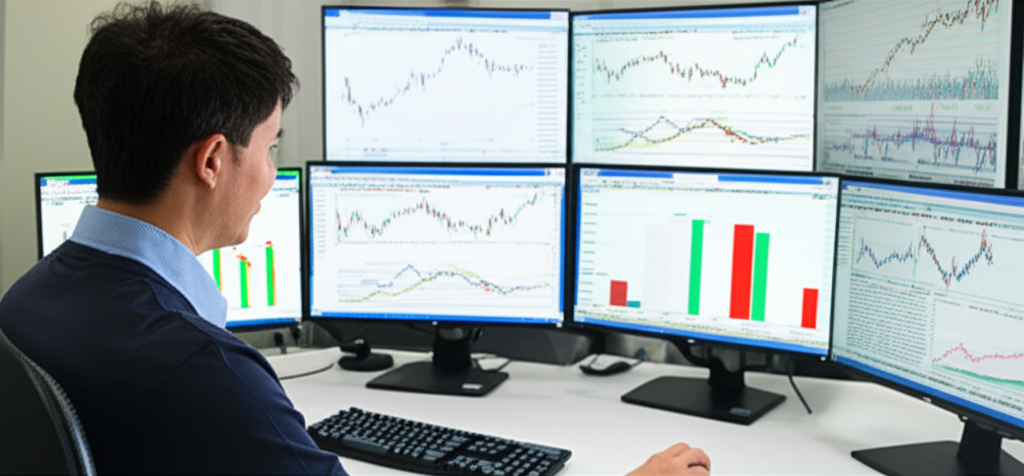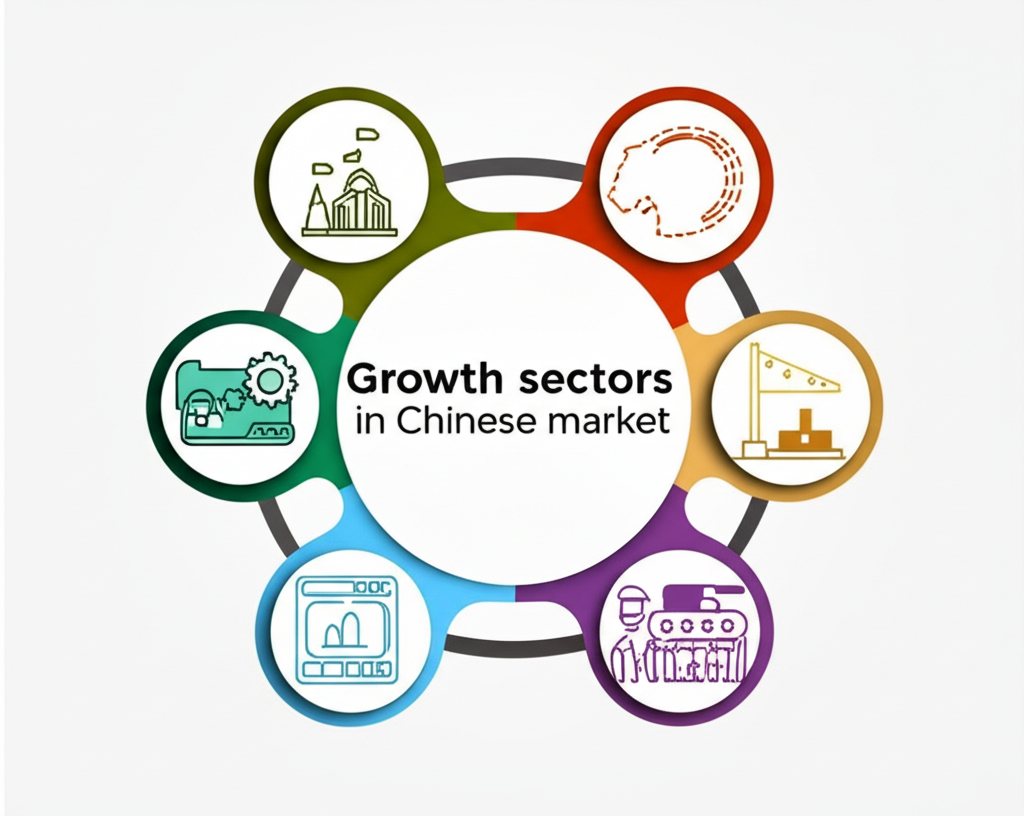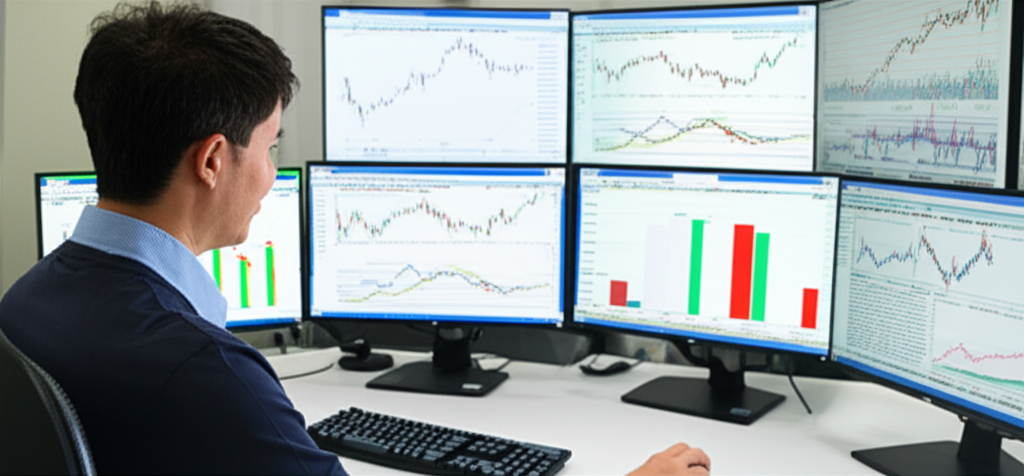Introduction: Understanding China ETFs for United States Investors in 2025
United States investors aiming to spread out their holdings and capture the energy of the world’s second-biggest economy have a strong option in China exchange-traded funds, or ETFs. Heading into 2025, China’s markets remain a major force worldwide, delivering real potential alongside distinct hurdles. This guide, designed just for folks stateside, breaks down the 2025 perspective on these funds, highlights promising growth areas, examines how geopolitics and economics play in, and offers practical tips for picking and buying them. Grasping the details of China ETFs-and the special angles US investors face-goes a long way toward smart choices in next year’s shifting investment world.

What Exactly are China ETFs and Why Consider Them?
Exchange-traded funds pool together assets like stocks, commodities, or bonds, and they trade on exchanges just like individual shares. China ETFs zero in on indexes made up of Chinese company stocks, giving investors a broad slice of that market without the hassle of buying stocks one by one. This setup spreads out the ups and downs tied to any single company, yet lets you ride the wave of China’s overall economic progress. ETFs usually come with cheaper fees than hands-on managed mutual funds and trade more easily throughout the day.

Different Types of China ETF Exposure: A-Shares, H-Shares, and Red Chips Explained
Getting a handle on the various share types matters a lot for US investors eyeing China ETFs. Each category determines trading locations and investor access:
- A-Shares: These represent stakes in mainland Chinese firms traded on the Shanghai or Shenzhen exchanges. Once mostly off-limits to outsiders, reforms like Stock Connect have cracked the door open. China A-share ETFs follow indexes of these stocks, delivering straight access to the homegrown economy-for instance, tapping into local consumer trends that drive everyday business.
- H-Shares: Mainland companies listing on the Hong Kong Stock Exchange issue these, priced in Hong Kong dollars. They’re easier for international players, including Americans, thanks to Hong Kong’s open markets and solid rules, which often mean smoother trades and clearer oversight.
- Red Chips: Companies set up outside the mainland-say, in Hong Kong or the Cayman Islands-but controlled by Chinese state or private interests, with most earnings from China. Hong Kong listings make them a go-to for foreign cash flowing into China-tied operations.
These distinctions shape how easy it is to buy in, how liquid the trades are, and what rules apply, so always check an ETF’s makeup before diving in.
The Landscape of China ETFs in 2025: Key Trends and Outlook for United States Investors
With 2025 on the horizon, China ETFs reflect a mix of growth predictions, policy tweaks at home, and the ups and downs in US-China ties. Experts see China’s economy pushing forward, though the engines might change-think less reliance on exports and more on tech innovation. Policies around shared wealth and streamlining supply chains could boost some industries while squeezing others. Keep an eye on rules clamping down on big tech or tutoring firms, as they’ve sparked swings before. How China bounces back from COVID-era slowdowns, especially in spending at home and factory output, will shape the picture.
Identifying Growth Sectors and Emerging Opportunities in China for 2025
US investors sizing up China ETFs for 2025 should zero in on areas fueled by government priorities and worldwide shifts. Here’s where the action looks hottest:
- Green Energy & Electric Vehicles: As a top dog in clean power and EV production, China stands to gain from pushes in solar panels, wind farms, batteries, and carmakers. Subsidies and rising demand-both local and abroad-could lift these plays, with firms like BYD leading the charge.
- Advanced Manufacturing & Technology: The quest for independence in chips, AI, and automation opens doors. “Hard tech” ETFs might deliver big gains as Beijing funnels resources here, reducing reliance on foreign suppliers.
- Digital Economy & E-commerce: Even after regulatory hits, online services keep evolving. Cloud services, digital payments, and shopping platforms drive daily life and business in China, with players like JD.com adapting to new rules.
- Domestic Consumption: A swelling middle class and city boom favor everyday goods, health care, and entertainment. Think rising sales in groceries, meds, and travel as incomes climb.
Geopolitical and Economic Risks for United States Investors in China ETFs
The upside comes with pitfalls, particularly for Americans in 2025. Here’s what to watch:
- Regulatory Risks: Beijing’s quick policy pivots can jolt industries and stock prices overnight. Stay ready for changes that hit your picks, like past moves on data privacy.
- Geopolitical Tensions: Trade spats, tech rivalries, and wider frictions between the US and China breed doubt. New tariffs or bans could hammer specific firms or whole fields, swaying how investors feel.
- Currency Fluctuations: These funds often face swings between the dollar and yuan. If the USD gains ground, it could eat into what you take home.
- Market Volatility and Liquidity: A-shares and similar can jump more wildly than US markets. Smaller funds or niche areas might trade thinly, complicating buys and sells.
The Council on Foreign Relations notes how these threads have made US flows into China bumpy lately.
Top China ETFs to Consider for United States Portfolios in 2025
For Americans wanting a foothold in China, standout ETFs trade right here on US exchanges. Below, we spotlight a few, plus a side-by-side look.
iShares MSCI China ETF (MCHI)
The iShares MSCI China ETF (MCHI) ranks among the biggest and go-to choices, covering big and midsize Chinese stocks from Hong Kong, Shanghai, and Shenzhen listings. It mirrors an index of these equities for solid, all-around access.
- Key Holdings: Expect names like Tencent and Alibaba in tech, plus banks and retail outfits.
- Historical Performance: It moves with China’s big-picture economy and rulebook shifts.
- Expense Ratio: Stays affordable for this kind of sweep.
- Suitability: A smart pick for broad, balanced China exposure without overcomplicating things.
Invesco Golden Dragon China ETF (PGJ)
The Invesco Golden Dragon China ETF (PGJ) targets Chinese firms listed stateside as American Depositary Receipts, or ADRs, streamlining the process for US traders.
- Focus: Centers on mainland operations but US-traded shares, like Pinduoduo or Baidu.
- Performance Analysis: Blends China trends with how Americans view these names.
- Expense Ratio: A bit pricier given the niche angle.
- Advantages/Disadvantages: Easy US trading perks, but watch for bunching in fewer stocks or extra US oversight on ADRs.
Other Notable China ETFs and Selection Criteria for US Investors
Outside MCHI and PGJ, options vary by angle:
- Vanguard FTSE Emerging Markets ETF (VWO) / iShares Core MSCI Emerging Markets ETF (IEMG): These wider emerging funds pack hefty China weight, mixing it with other hot spots like India or Brazil for less direct but diversified bets.
- Sector-Specific China ETFs: If you’re bullish on tech or biotech, targeted funds let you hone in, like those chasing AI or clean energy booms.
Criteria for US Investors to Evaluate and Select ETFs:
- Exposure Type: Check if it’s heavy on A-shares, H-shares, Red Chips, or blended-does it match your access goals?
- Underlying Index: Dig into the benchmark and how it’s built for transparency.
- Expense Ratio: Cheaper ones keep more gains yours.
- Liquidity and Trading Volume: Busier trading means better prices and quicker moves.
- Concentration Risk: Review top stocks and sectors-avoid too much in one basket.
- Tracking Error: See how well it sticks to the index’s path.
Top China ETFs Comparison Table (Illustrative, consult official sources for current data):
| ETF Ticker | Name | Focus | Expense Ratio (Approx.) | Key Advantage for US Investors |
|---|---|---|---|---|
| MCHI | iShares MSCI China ETF | Broad large & mid-cap China equities | 0.58% | Diversified exposure across share classes |
| PGJ | Invesco Golden Dragon China ETF | US-listed Chinese companies (ADRs) | 0.70% | Simplicity of US-exchange trading |
| FXI | iShares China Large-Cap ETF | Largest Chinese companies (H-shares) | 0.74% | Focus on established large-cap companies |
| KWEB | KraneShares CSI China Internet ETF | China’s internet and e-commerce sectors | 0.73% | Targeted exposure to digital economy growth |
How to Invest in China ETFs from the United States in 2025
Getting into China ETFs from the US is pretty direct, but mind the fine points:
- Open a Brokerage Account: Pick a trusted, US-overseen firm with ETF and global reach.
- Fund Your Account: Add money through ACH transfers, wires, or checks-quick and standard.
- Research and Select ETFs: Apply the earlier tips to find fits for your strategy.
- Place Your Order: Search the ticker on your platform, pick shares and order style (market or limit). Time it for US hours when international ETF volume peaks.
- Understand Currency Conversion: These trade in dollars, but yuan exposure lingers. Brokers sort dividends or events.
- Stay Informed: Track rules, data releases, and tensions from both sides of the Pacific.
Choosing the Right Broker for International Investing & China ETF Access (US Considerations)
The broker you choose sets the stage for smooth global trades and China ETF buys. Focus on these:
- Regulation: Stick to FINRA- and SEC-approved outfits for safety nets like SIPC insurance.
- Fees and Commissions: Hunt low or zero ETF trades, fair conversion rates, and no hidden costs.
- Platform Features: Seek intuitive apps, charts, research tools, and on-the-go access.
- Product Availability: Confirm they carry your target China ETFs.
- Customer Support: Solid help is key for cross-border questions.
Broker Comparison for Global Market Access
China ETFs draw plenty of US interest as a way to tap into this economic powerhouse. Here’s a rundown of solid brokers for worldwide access, highlighting what they bring to the table for stateside investors:
| Broker | Strengths Relevant to Global Market Access |
|---|---|
| Fidelity | Zero commissions on US-listed ETFs, extensive research on international holdings, and seamless mobile trading for China-focused funds. |
| Charles Schwab | No-fee ETF trades, strong tools for emerging markets analysis, and easy access to ADRs and broad China ETFs. |
| Interactive Brokers | Low-cost global execution, advanced charting for currency risks, and direct links to Hong Kong and US exchanges. |
| Moneta Markets | Holds an FCA license for reliable oversight; offers competitive spreads on international CFDs tied to China ETFs, with user-friendly platforms for diversified exposure. |
| E*TRADE (Morgan Stanley) | Commission-free ETF buys, robust international news feeds, and integration with retirement accounts for long-term China plays. |



No responses yet